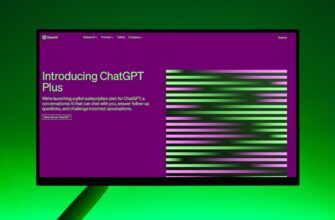- What is ADA Staking and Yield Farming on Kraken?
- Why Stake ADA on Kraken? Key Benefits
- How to Stake ADA on Kraken: Step-by-Step Guide
- ADA Staking Rewards: What to Expect
- Risks and Mitigation Strategies
- Pro Tips for Maximizing Returns
- Frequently Asked Questions (FAQ)
- What’s the difference between yield farming and staking ADA on Kraken?
- How often are rewards paid?
- Is there an unstaking period?
- Can I stake other coins on Kraken?
- What fees does Kraken charge?
- Is staking ADA on Kraken safe?
What is ADA Staking and Yield Farming on Kraken?
Cardano (ADA) staking on Kraken lets you earn passive income by participating in blockchain validation without technical expertise. Unlike decentralized yield farming involving liquidity pools, Kraken’s centralized solution simplifies the process: you deposit ADA, and Kraken handles the staking mechanics. Rewards are generated through Kraken’s participation in Cardano’s proof-of-stake consensus, offering a secure alternative to complex DeFi protocols.
Why Stake ADA on Kraken? Key Benefits
- Zero Lockup Period: Withdraw ADA anytime—no fixed staking terms.
- Automatic Compounding: Rewards are paid twice weekly and automatically restaked.
- No Minimum Balance: Stake any amount (unlike Cardano’s native 10 ADA minimum).
- Enterprise-Grade Security: Kraken’s custodial protection reduces risks like smart contract exploits.
- Tax Documentation: Simplified reward tracking for tax reporting.
How to Stake ADA on Kraken: Step-by-Step Guide
- Create & Verify Account: Sign up at Kraken.com and complete KYC verification.
- Deposit ADA: Navigate to Funding > Deposit, select Cardano, and transfer ADA from your wallet.
- Enable Staking: Go to Earn > Stake, search for ADA, and click Stake.
- Allocate Funds: Enter the amount to stake (no minimum) and confirm.
- Monitor Rewards: Track earnings under Earn > Staking. Payouts occur every Tuesday and Friday.
ADA Staking Rewards: What to Expect
Kraken offers ~4-6% annual returns on ADA, paid in ADA. Rewards vary based on Cardano network conditions but typically outpace traditional savings accounts. Example: Staking 1,000 ADA could yield ~50 ADA annually. Note: Rewards are taxable events in most jurisdictions.
Risks and Mitigation Strategies
- Market Volatility: ADA price fluctuations impact reward value. Mitigation: Dollar-cost average deposits.
- Platform Risk: Centralized exchanges face regulatory/hacking risks. Mitigation: Use Kraken’s advanced security features (2FA, global settings lock).
- Slashing: Unlike some networks, Cardano doesn’t slash staked ADA for downtime.
Pro Tips for Maximizing Returns
- Reinvest rewards manually to compound beyond automatic payouts.
- Diversify with Kraken’s other staking options (ETH, DOT).
- Set price alerts for ADA to buy dips before staking.
- Monitor Kraken’s blog for promotional APY boosts.
Frequently Asked Questions (FAQ)
What’s the difference between yield farming and staking ADA on Kraken?
Yield farming typically involves providing liquidity to DeFi protocols for token rewards, while Kraken staking is centralized ADA delegation with fixed returns—no liquidity pools or impermanent loss risk.
How often are rewards paid?
Rewards distribute twice weekly (Tuesdays/Fridays) and auto-restake.
Is there an unstaking period?
No—ADA withdrawals are instant. Rewards stop accruing immediately upon unstaking.
Can I stake other coins on Kraken?
Yes! Kraken supports staking for 15+ coins including Ethereum (ETH), Polkadot (DOT), and Solana (SOL).
What fees does Kraken charge?
Kraken takes a 15% commission on staking rewards. No deposit/withdrawal fees for ADA.
Is staking ADA on Kraken safe?
Kraken employs 95% cold storage, regulatory compliance (FinCEN, FCA), and audit certifications. Safer than unaudited DeFi farms but carries exchange risk.








